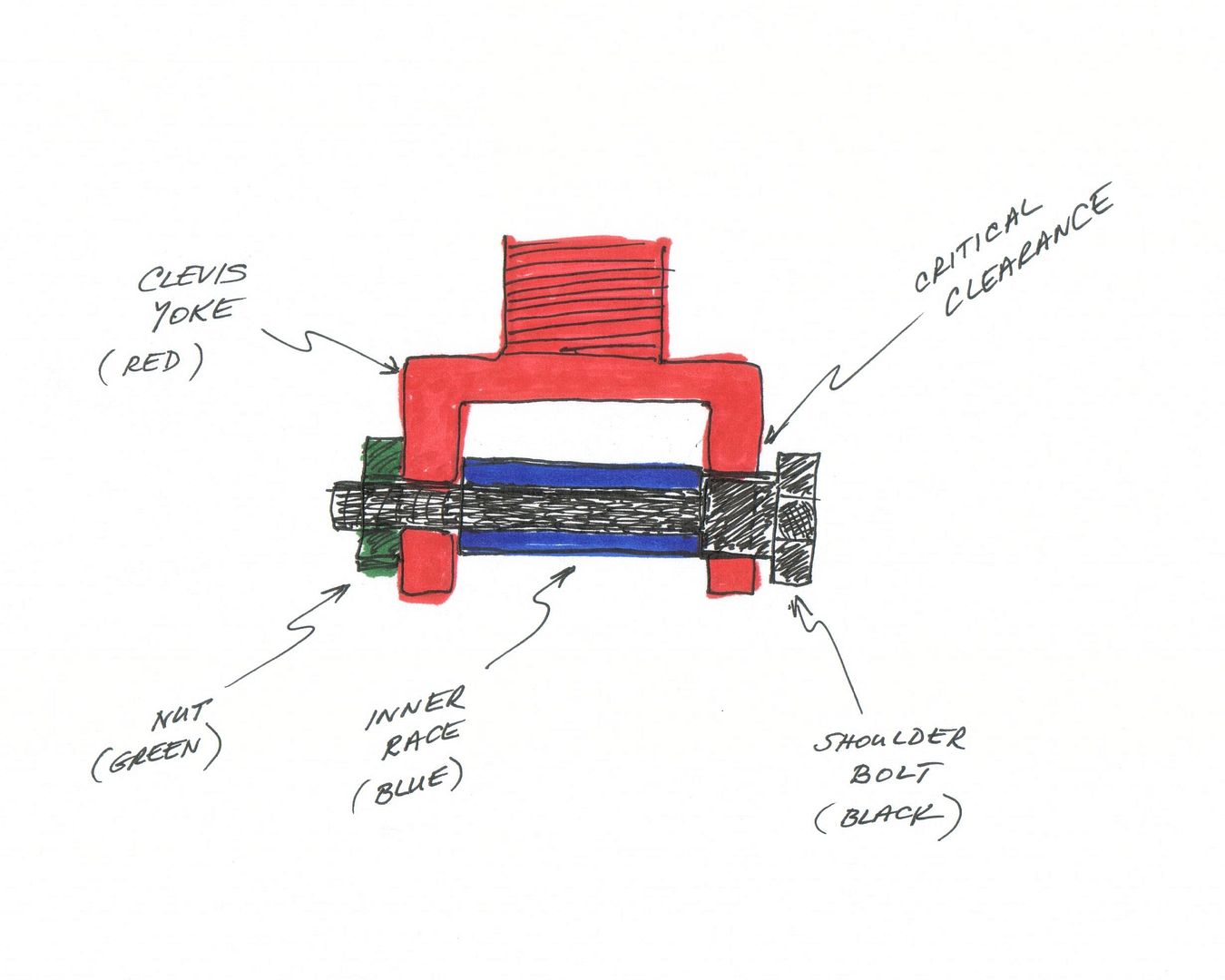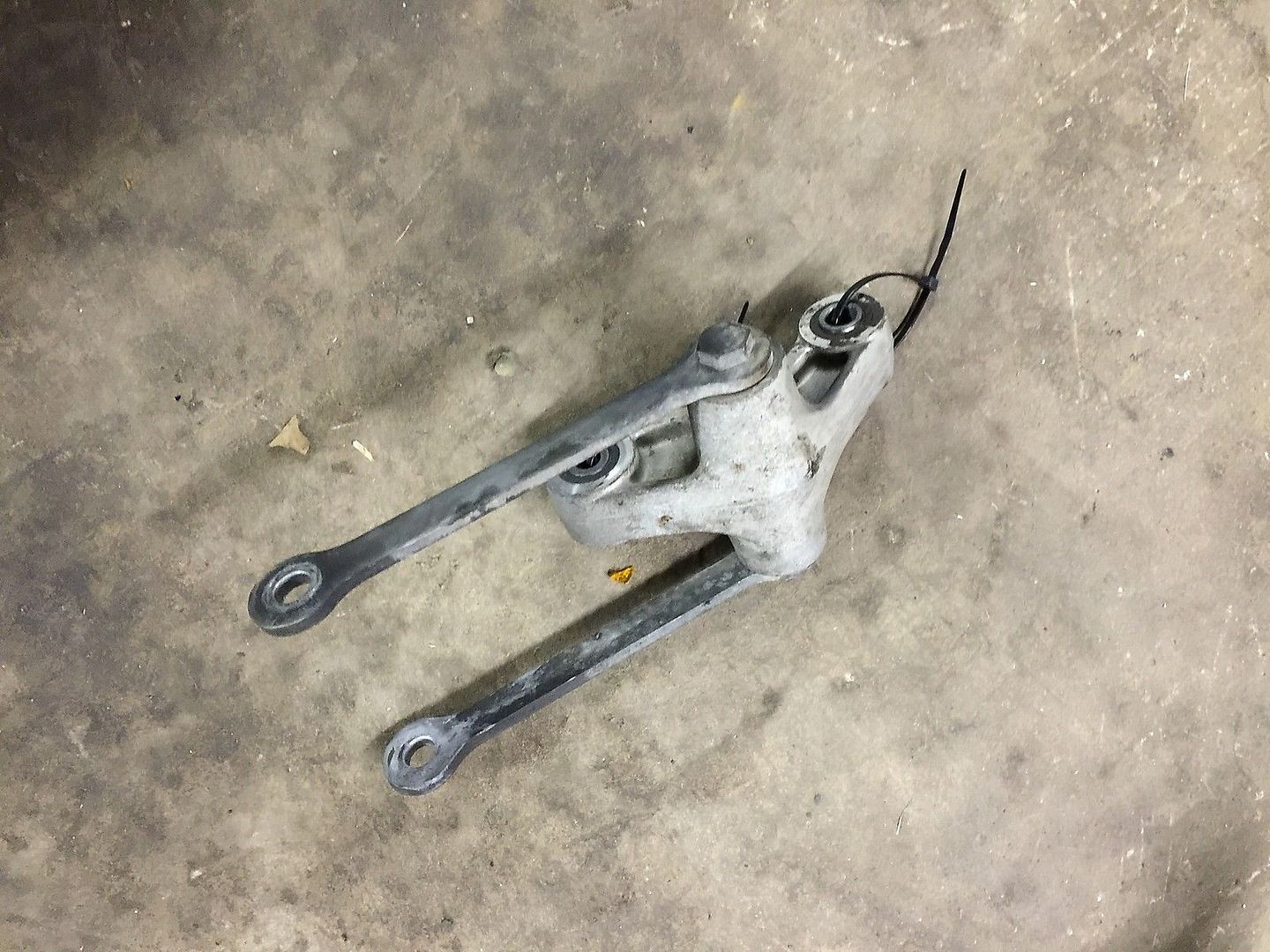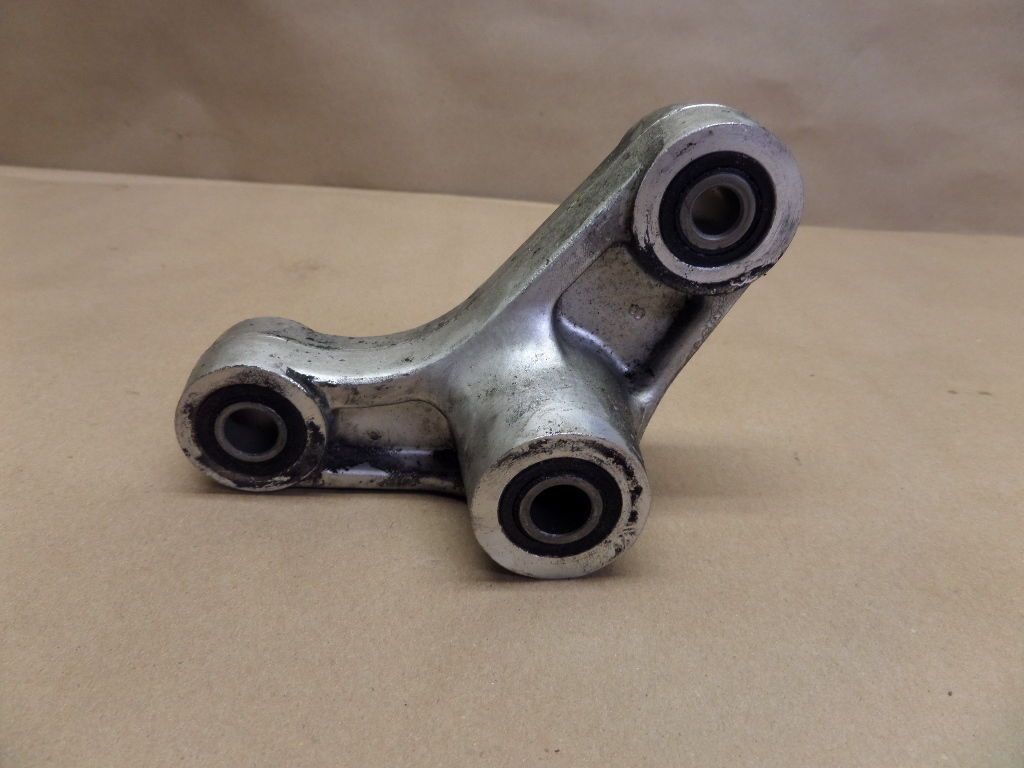The clevis on my FJR was replaced in May. I was not aware of this thread until last Saturday. Nice thread.
I spoke with Eric Trinkley at Penske today.
He is very helpful and supportive. I approached this wanting to avoid a second broken clevis. I was looking to clarify two things. Does Penske have a special bolt (answer no) and what is the recommended torque value.
Eric and I discussed the following points.
1. Does Penske have a special bolt? No use the stock bolt.
2. What is the recommend torque value for the bolt using their aluminum clevis. The FSM recommendation is for a stock steel clevis and bolt configuration. Eric recommended the FSM torque value.
3. Yamaha stock bolt is too short as two threads do not protrude the nut when tightened. This can lead to over torquing. Furthermore the Yamaha stock nut locking feature is at the end of the nut. I am going to look for a a nut with a nylon locking. Generally the lock feature of nylon lock nut engages sooner than the lock feature of the factory nut. Hopefully I can find one and add some blue locktite.
4. When the bolt is fully inserted the bolt's minor machined diameter engages 0.125" into the clevis's small diameter. This leaves about 0.175" of unsupported space in the clevis' small diameter. (the width of the clevis is 0.300"). This means only 41% of the machined surface of the bolt is engaged into the clevis' small diameter.
5. The small radius at the bottom of the threaded boss provides a stress concentration leading to fatigue failure. See post 71 on page 4 on the Forum. Kudo's to those on the forum who noted this; TomInPa, Guarald and others.
6. Eric confirmed the shock bushing is the
only feature preventing bending of the clevis during tightening. The bushing tolerance out of Penske's control.
Eric confirmed the design could be improved. It is the only design where Penske has experienced failures. If more of these are brought Eric's attention would help get traction for a updated design.
From TomInPa's post. Here is Eric contact info.
Eric Trinkley
Motorcycle Department
Penske Racing Shocks
Custom Axis Shocks
150 Franklin Street
Reading, PA 19602
United States
Office: 610.375.6180
Fax: 610.375.6190
www.penskeshocks.com
www.customaxisshocks.com


























![Decrum Motorcycle Jacket Men - Mens Leather Jacket | [1100065] Austin Brown, XL](https://m.media-amazon.com/images/I/41HqZSRj6LL._SL500_.jpg)




























